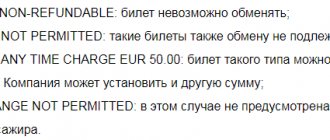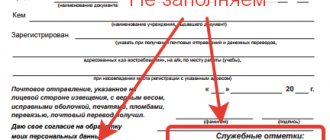The annual increase in service costs forces owners of residential property in multi-apartment buildings to think about how they can avoid paying for central heating services and switch to an alternative - individual heating.
Changing the centralized heating method to installing your own equipment will allow you to independently control temperature indicators and reduce cash costs.
Refusing heating is an action not prohibited by law, but before carrying it out you need to collect the necessary documents and comply with legal formalities.
Is it possible to refuse centralized heating?
The main problem if you want to get rid of the central heat supply is the need to rebuild the entire heating structure of the house.
The central heating network in the house has common communications and metering devices. By disconnecting one apartment from the general network, you can disrupt the entire circuit.
The elements that make up the centralized heat supply of a building are classified as common property. It is possible to disconnect one room from the central heating system only by obtaining permits, which must be provided at the place of request.
The system is disassembled by company employees. If you cut off the batteries yourself, this can lead to an unpleasant result, because they will force you to reconnect the radiator and issue a fine.
Proper disconnection of radiators
The owner of a private house with an autonomous heating system has the opportunity to turn off the boiler at any time, depending on the weather outside or based on other considerations.
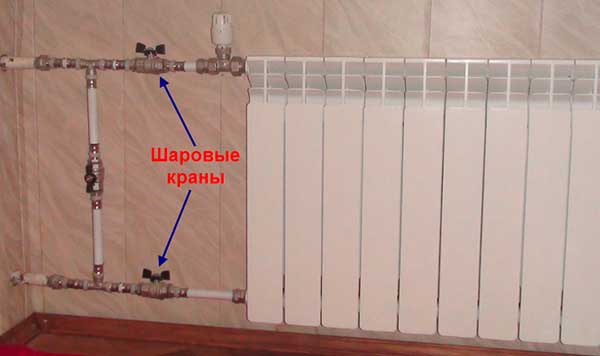
For those who live in houses with central heating, questions about how to turn off the radiator usually arise in two cases:
- if the weather is warm outside and the central heating has not yet been turned off, since the heating season has not officially ended;
- if necessary, replace, repair or paint the radiator, repair the wall behind the radiator.
In this case, one should take into account this point: there is always a coolant inside the battery. It is drained only in case of repair work in the system. This is due to the fact that the main part of the heating devices installed in old houses, as well as the intra-house wiring, are made of steel
This is due to the fact that the main part of the heating devices installed in old houses, as well as the intra-house wiring, are made of steel.
The liquid inside the heating battery contains a certain amount of oxygen in dissolved form, which over time completely reacts with the metal, as a result of which corrosion stops.
You cannot leave the system or a separate heating device unfilled for a long time - moisture remains on the inner surface of the steel or cast iron battery, which does not evaporate for a long time in a confined space. This significantly accelerates the corrosion process. Thus, the coolant is drained only in exceptional cases.
Is it possible to carry out an individual disconnection procedure without the consent of neighbors?
In some cases, in a house with more than two owners, it is impossible to independently turn off the heating.
But, if the central heating system was not included in the common property of the house, then the consent of the neighbors is not necessary. In this case, only permission from government authorities will be required.
The costs of rebuilding and reorganizing the general heat supply system when one premises is disconnected are borne by the owner of such real estate. The new system design must be taken to the commission for approval. A set of necessary papers must be attached to the project.
Required package of documents
You need to prepare:
- A freely written statement from the owner of the premises.
- Passport of the room (technical) that will be disconnected from the general heating system.
- Legal papers confirming ownership of the apartment.
- Consent (written) of residents registered in the premises and over 18 years of age.
- Permission for individual conversion of the heating system to a personal boiler and for performing the necessary work for this.
Redevelopment project
The renovation project is a complex technical document. It is impossible to prepare it yourself. You will have to contact a municipal or private structure involved in project development.
The design documentation is based on indicators of the influence of the elements of an individual heating system on the performance of the entire heating network.
In addition, the following calculations are made:
- Thermal-hydraulic calculations.
- Calculation of the remaining heat supply from risers and sun loungers.
If calculations indicate that disconnection is technically possible, the project must be submitted for approval. Otherwise, when individual communications can disrupt the heating regime in neighboring properties, the project will not be approved.
Technical side of the issue
You can proceed to the technical side of the issue when all the necessary permissions have been obtained. Disassembly of the parts that make up the previous system is carried out by specialists from the installation organization.
After abandoning central heating, you can cut the pipes yourself to install individual boiler equipment, but it is better not to do this, but to trust the specialists.
Having dismantled the old structures, they began to install autonomous equipment and heating pipelines. Implementing a project to install a new heating system is similar to installing a boiler in private cottages outside the city or rural houses.
Rules for installing an individual heating system in an apartment:
- For individual heating equipment, a wall-mounted boiler is installed. It is installed above the radiators, which prevents the coolant from circulating naturally.
- A circulation pump will forcefully help create heat exchange. You can install a boiler with built-in pumping equipment.
- The type of heating boiler must meet all safety standards. The heating temperature of the heat-transferring liquid (water, antifreeze) cannot exceed 95˚C. The pressure in the circuit is allowed less than 1 MPa.
- Radiator sections made of aluminum transfer heat more efficiently than others. For individual heat supply, plastic pipes are suitable - inexpensive and reliable.
The wiring is selected depending on the layout of the premises. Parallel connection of radiators when distributing from one pipe is easy to install and economical.
Beam type connections are the most convenient to maintain and operate, but they are not suitable for rooms with low ceilings.
Decision is made. How to disconnect from the heating plant
In this case, it is necessary to build on the provisions set out in the “Rules for the provision of services for centralized water and heat supply”, which are approved by the Government Resolution. In accordance with the rules, you have the right to refuse the services of the energy company in the supply of heat and hot water. The refusal procedure is based on the provisions of the existing agreement between the apartment owner and the heat supplier company. Any contract can be terminated. True or fictitious reasons for terminating a contract for the supply of hot water and heating can always be found. Today, most companies operating in the heat supply market systematically violate contractual terms, not to mention neglecting existing sanitary norms and rules.
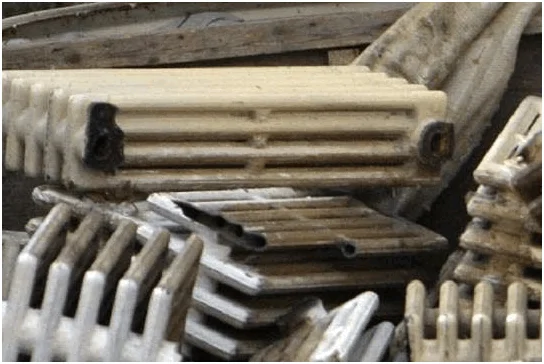
* You decide to abandon central heating, then you will find the following:
- carry out, at your own expense and on your own, the re-equipment of the system to provide adjacent residential premises with heating and hot water supply in full;
- carry out work to restore normal operation of ventilation and drainage systems in adjacent apartments.
All work is provided for by the relevant SNiPs (41-01-2003, 23-02-2003 and 31-01-2003). It is prohibited to carry out technical work without the consent of neighbors and other residents of your home.
Industry Orders and Directives become a significant obstacle to realizing your desire to become independent from service providers.
For example: Disconnection from central heating and hot water supply to a subscriber is carried out only on the condition that the entire house must refuse services. Such restrictions introduce an unspoken ban on the refusal of central heating and hot water supply in individual apartments. Such norms contradict the provisions of the Housing Code, however, from a technical point of view, it is quite difficult to prove the illegality of the actions of public utilities.
This situation is a widespread phenomenon and significantly limits our legal rights to dispose of our property. We become dependent on the wishes of other homeowners in an apartment building, who are satisfied with the state of things, and they do not intend to make changes to the existing situation for various reasons. If you seek protection of your owner's rights through the court, there is a chance to win the case, however, this procedure can take a lot of time. Arguments for refusing to issue a disconnection permit may include technical reasons that explain the impossibility of carrying out disconnection work without disrupting the functionality of the entire central heating and hot water supply system.
Note: Even if the owner of the apartment has a debt for heating, this will not be a reason for the service provider company to disconnect. The network will remain intact, while the debt will be collected from the debtor in court.
Heat suppliers are monopolists in the heat supply market, who try by all means to maintain their sphere of influence over the housing stock.
What other issues need to be addressed?
Obtaining approval to turn off the centralized heating supply in your own home is not an easy task. It will not be possible to resolve this issue in a few days.
The procedure will take some time, since the entire system, together with the boiler, must comply with established safety standards:
- You need to purchase a boiler to switch to an alternative heat supply.
- Buy a circulation pump or use a modern boiler.
A hermetically sealed boiler must have equipment that ensures complete safety. The pressure cannot increase more than 1 MPa, and the temperature of the liquid in the circuit cannot exceed 95˚C. You can choose any radiators; aluminum ones are more often installed.
For pipe routing, the layout features of a residential apartment are taken into account. You can use a beam circuit or a single-pipe circuit.
What's next
What equipment is best to choose if you are going to install autonomous heating yourself?
Boiler
The optimal choice in terms of efficiency and ease of use is a condensing boiler with a storage water heater.
Why him?
- The condensing circuit is more economical: it increases the boiler efficiency by 9-11% compared to classic gas boilers.
- The storage water heater guarantees a stable hot water temperature. Anyone who has ever used a flow-through gas water heater will understand the meaning of the recommendation: trying to take a shower results in a continuous struggle with the mixer.
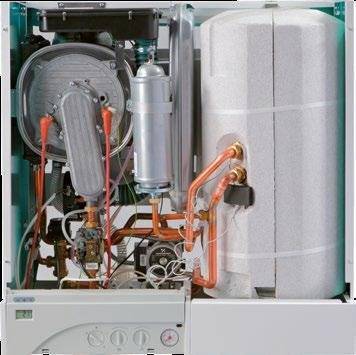
Condensing boiler with built-in boiler.
A typical modern boiler is equipped with at least a safety group - an air vent, a pressure gauge and a safety valve. Sometimes its design also includes an expansion tank; in other cases, a membrane tank with a capacity of 10% of the total capacity of the circuit is mounted at any point in the autonomous system.
Pipes
The most practical solution is aluminum-reinforced polypropylene. Reinforcement does not so much increase the strength of the pipes (it is already excessive for an autonomous circuit), but rather reduces thermal expansion.
Batteries
Our choice is sectional aluminum radiators. They combine low cost with decent appearance and excellent heat dissipation (about 200 watts per section). Each radiator is equipped with a valve at the inlet, a throttle or thermal head at the outlet and an air vent in one of the upper plugs.
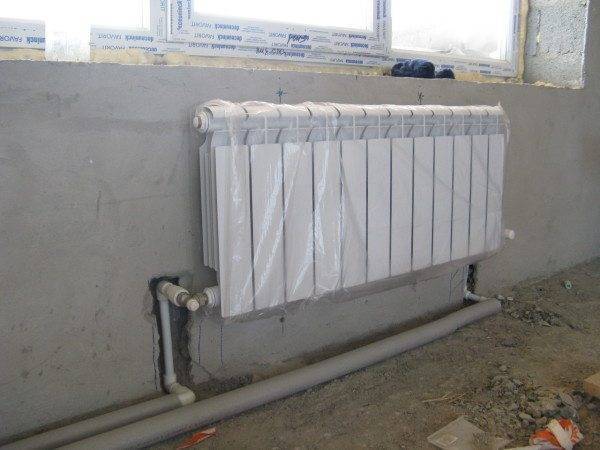
The photo shows an installed radiator.
What needs to be done to stop paying after giving up heating?
When permission has been received and work on reinstalling the heating system has been completed, and receipts for payment for the service continue to arrive, you must submit the following package of documents to the heating network to remove the owner from the register:
- A photocopy taken from the original design documentation for the reconstruction of the heating system.
- Provide a photocopy of the heating system acceptance certificate.
Additional documents may be required, as lists sometimes differ by region.
Collective shutdown
Usually there is only one entrance at the elevator hub. If it has hot water connections, the elevator is not completely disconnected, but only from the heating system, while the valves are closed with plugs and sealed.
To correctly perform a collective shutdown, do the following:
- Organize a meeting of residents at which a decision on disconnection will be officially made and recorded in the minutes.
- Initiate the creation of a conciliation commission in the local administration and submit to it an application to disconnect the facility from the CSO, attaching the minutes of the residents’ meeting.
- If the application is approved, the commission must provide the representative of the residents' association with a list of organizations from which it is necessary to obtain technical conditions (TS) for the development of the project. Note that a positive decision is not at all mandatory: if the reorganization may negatively affect the work of the central distribution center or the gas supply system does not have sufficient capacity, the commission has the right to refuse it. The only way out in such a situation can be to re-equip the system, paid for by the residents, because of which the process has stalled.
- Next, you need to order a project from a design organization, to which all collected specifications are transferred.
The finished project must be approved by organizations servicing utility networks. Here is their list:
- heating network: checks whether the implementation of design solutions will lead to a deterioration in the operation of the heat supply system;
- gas facilities: makes sure that when connecting all the gas equipment provided for in the project, the gas supply system will not be overloaded;
- architectural management: the visa of this institution means that the installation of coaxial chimneys will not disturb the appearance of the architectural monument;
- housing organization: confirms the safety of the technical solutions proposed in the project in relation to load-bearing structures and the technical possibility of disconnecting the facility from the central heating system.
If the project also provides for electric heating, it should be approved by the energy sales office.
Then you need to enter into an agreement with a licensed construction and installation organization to carry out all the work provided for in the project. After checking the correctness of their implementation, representatives of all mentioned organizations must give permission for commissioning.
Water cut-off announcement
The water supply of an apartment building provides residents with comfortable living conditions. The shutdown of hot water is due to several factors, the main one being temporary technical improvement, checking and troubleshooting pipes and sewers. In this case, the supply of this communication is stopped in the same season, every year. There are other reasons for supply cuts. The uninterrupted performance of communication functions is guaranteed by an agreement with the management company. Therefore, housing office employees and utility service providers must inform residents in advance about planned and other outages.
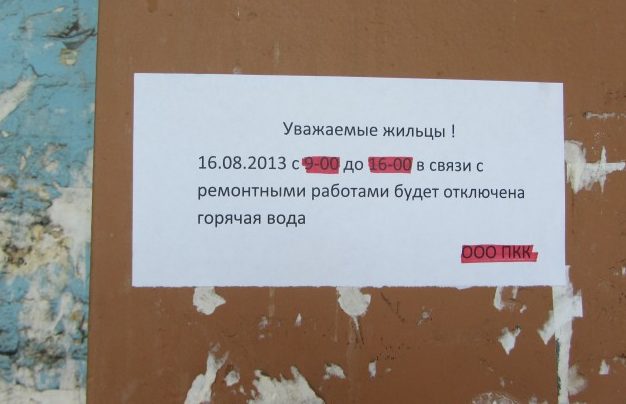
Why is it necessary to approve a new heating system project?

No organization will give permission to switch to individual heating without its design. It will not be possible to draw up a project on an independent basis and without an engineering education. It is best to seek help from a specialized institution.
The project must meet the following requirements:
- Show the role of a certain area (apartment) in the overall heating system of the house (when switching to individual heating);
- Possibility of equipping an apartment with a heating boiler from a fire safety point of view;
- Calculations for residual elements of central heating (sunbeds and risers), for which you will have to pay in the general manner, despite the transition;
- Thermohydraulic calculations.
Only if all of the above calculations fit into acceptable standards, can the finished project be submitted for the approval procedure. If the prepared document does not comply with the standards, the individual will receive a refusal.
Leading legal consultant of Est-a-Tet company Yulia Dymova answers:
It is still necessary to obtain an act of turning off the heating and, on this basis, contact the management company with a request to make a recalculation. If the management company does not do this on its own, it will be possible to sue it. If they refuse to provide the report, then it is necessary to call the housing inspection, which will record the fact of the lack of heating.
How to solve problems with the management company?
How to reduce heating bills if the radiators are barely warm?
Lawyer Sergei Golovin answers:
The bailiffs themselves cannot take your money without a court decision and a writ of execution. Most likely, a judicial act has been issued at the moment - in most cases it is a court order, which is also an executive document on the basis of which the write-off occurs. You need to find out who issued this judicial act, and then get a copy of it. This can be done if you contact the bailiffs or register on the government services portal.
From the moment you receive this document (if it is a court order), within 10 days you can write a statement to cancel it, and it will be canceled. If this is a court decision, you need to appeal it: in case of a decision in absentia, you must submit an application to the court that made this decision with a request to cancel it. If this is a decision in the usual manner, then an appeal is filed. The complaint must indicate that you do not pay for heating because it is turned off, and provide evidence of this. You can invite your neighbors as witnesses to the court. After the judicial act is cancelled, if the court does not state in the decision that your heating has been turned off, I advise you to draw up the appropriate act.
If for some reason the bailiffs write off your money without a judicial act, then you need to file complaints with a higher bailiff, the prosecutor's office, or appeal the actions of the bailiffs in court.
You can also recover from the management organization, to whose account the money debited from you is transferred, money for services, since these services were not actually provided to you. But to do this, you need to stock up on any evidence that you were not provided with heating services: witness testimony, for example. However, you should first send a claim to the management company. Next, you need to go to court, but there is one peculiarity here: if representatives of the Criminal Code object in court, a statute of limitations may be applied, and the court will recover money only for the previous three years.
Benefits for paying utility bills. When, to whom, how much?
How is heat energy consumption calculated?







